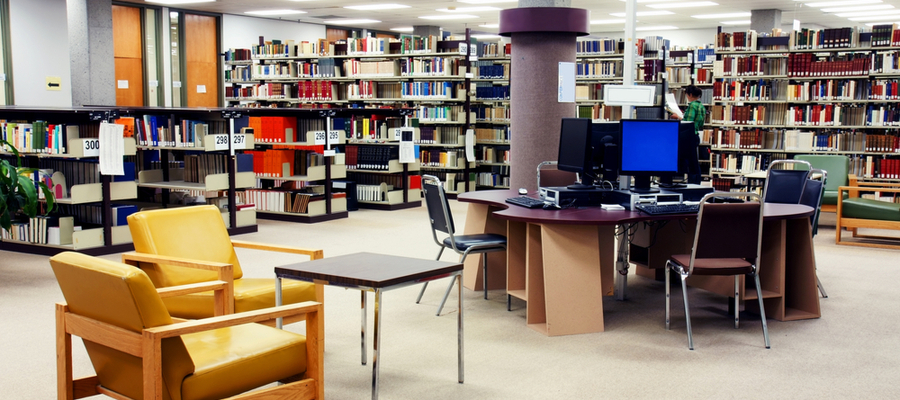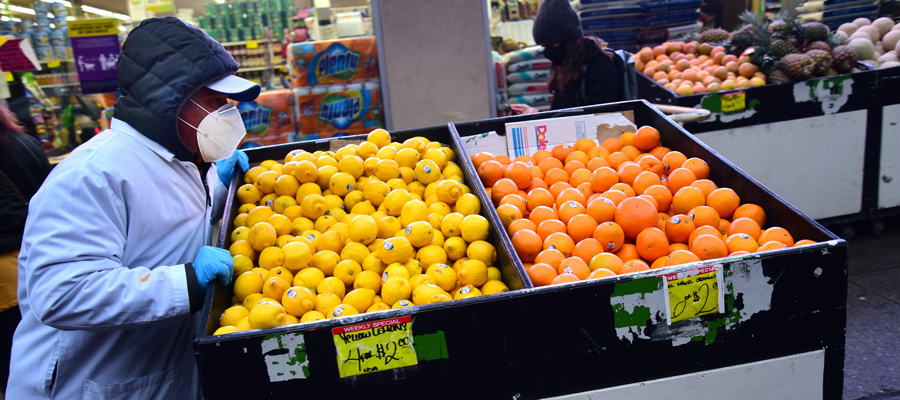Digital equity and community solidarity during and after COVID-19

As many have noted, COVID-19 is an efficient illuminator of our society’s strengths and weaknesses; its progress accelerates in spaces of inequality and injustice.
There is a race among public health agencies at all levels to provide timely, accurate information about COVID-19 that is essential to support physical distancing policies and to maintain quarantine and stay-at-home rules. New, ambitious, vital social programs and anti-poverty policies have emerged in an effort to patch a frayed social safety net, save lives and livelihoods during the crisis, and make it possible for people to comply with all-important physical distancing and social isolation.
Those who are most at risk of COVID-19… are also those who are least likely to be tapped into or able to afford the relatively steep cost of these mainstream Internet information channels.
But persistent digital inequalities threaten these objectives. Timely information, access to benefits and programs and the transition to working or studying remotely, require that Canadians have a high speed Internet connection, a working digital device or phone, digital savviness and fluency in English or French. Yet those who are most at risk of COVID-19 in terms of their health, personal security and livelihoods are also those who are least likely to be tapped into or able to afford the relatively steep cost of these mainstream Internet information channels that our institutions seem to take for granted. Overwhelmingly, these are Black, Indigenous, new immigrant, refugee, and other racialized and low income communities.
Digital inequalities
Understandably, the claim that 94% of British Columbians have access to the Internet at home might instill confidence in our institutions that they can rely upon the Internet for COVID-19-related communications. But this figure was generated in a 2019 Statistics Canada Internet Use Survey that was carried out electronically, prompting some groups to question the reliability of this data. Moreover, this figure neglects differences in Internet access across income, the digital literacy and language skills needed to participate online, and the fact that many families must make financial sacrifices to maintain an Internet connection, sacrifices they may no longer be able to make in these COVID-19 times. As Nisa Malli of the Brookfield Institute and Laura Tribe of OpenMedia have explained, the Internet is not as accessible as we might think.
Those of us who are accustomed to ubiquitous access to the Internet at home and work across multiple devices can lose sight of how others struggle to maintain connectivity.
Those of us who are accustomed to ubiquitous access to the Internet at home and work across multiple devices can lose sight of how others struggle to maintain connectivity. Although digital inequalities among students is not a new problem, it has come to the forefront as the BC Ministry of Education and school districts scramble to transition the province’s 575,000 school children to crisis remote teaching (we will not pretend that this will even approximate a systematic and planned version of online learning). The President of the BC School Trustees Association, Stephanie Higginson, acknowledged the challenges of introducing province-wide online learning when families have few devices and “some [students] don’t even have connectivity in their homes.”
Digital inequality is a matter of income. The Canadian Radio and Telecommunications Commission (CRTC) found that only 69% of Canadians in the 1st Income quintile (earning less than 33,000 annually) had access to the Internet at home in 2017 (CRTC, 2019) compared to 94.5% in the 5th Quintile (earning more than $132,909 annually). Similarly, only 63% of Canadians in the 1st Income Quintile have access to a working home computer compared to 95% of those in the 5th Quintile. The quality and speed of Internet connectivity also matters; many British Columbians do not have access to Internet that even approximates the 50 Mps download and 10 Mps upload speeds needed for most online activities, particularly in rural and remote areas.
Digital inequality is a matter of income.
73% of Canadians in the 1st Quintile have a mobile phone, and 42% of these households are mobile only. Mobile phones might provide some connectivity, but they are not appropriate for online learning or for applying for benefits, and cell phone plans and data caps remain expensive and restrictive. Some Internet Service Providers (ISPs), such as Shaw, have discovered that it is possible to extend free public WiFi into communities, but these are not secure connections required to engage with online government and services. It is also unfair to expect families, people with disabilities and others to roam the streets looking for WiFi hotspots, especially as people are being constantly instructed to stay home. As OpenMedia has made clear, ISPs need to drop prohibitive data caps, and moving into a post-COVID-19 future, we need to have a conversation about the risks of entrusting vital Internet infrastructure to private interests.
Access to timely and accurate information
Efforts to mobilize British Columbians to ‘flatten the curve’ may be encouraging thus far, but they have been encumbered by a lack of appropriate materials in the multiple languages read and spoken in BC, and a lack of capacity among health and government agencies to reach British Columbians who live on the digital margins.
The BC Centre for Disease Control has translated COVID-19 information in Simplified and Traditional Chinese, Punjabi, Farsi, English and French. But refugee families and low-wage front- line essential workers also speak Arabic, Amharic, Tagalog, Vietnamese and Spanish and they may or may not be literate in those languages. The helpful 811 service has mobilized to offer information by phone in different languages, but people need to know about this service in order to access it. An immigration and settlement worker shared with me that when they phoned to check in on families from refugee backgrounds in week 2 of the state of emergency, they found families distressed by the closing down of local schools and services, but largely unaware of the cause. Low wage essential workers and Temporary Foreign Workers who engage in work that makes social distancing difficult if not impossible, have shared with outreach workers that they feel isolated and anxious because they don’t have the information they need to protect themselves, their families and the public.
The traditional social networks in which this information may have circulated have become frayed in these times of social distancing; to compensate, settlement and outreach workers who are still employed, along with many volunteers, spend their time interpreting and translating the information on BCCED, WHO and the Federal Government into information that people whose primary language is other than English or French can understand.
Access to services and benefits
Luckily, online applications for benefits such as EI and Canada Emergency Response Benefit (CERB) are relatively straightforward, but the process is still a challenge for those who have traditionally relied upon librarians, adult English Second Language and literacy educators, settlement workers and advocates to make access to government services and information possible. For years now these community-based educators and advocates, many of whom work in non-profit agencies with shoe-string budgets, have assumed the role of proxy social service counters, helping adults to navigate their children’s education, employment and government services. Tragically, many have now been laid off. It could not be at a worse time. Those who remain are adopting inventive and intensive methods that blend old and new technologies across physical distancing.
These efforts are lifesaving, they make physical distancing and social isolation possible, and they bring into sharp relief the ways in which community-based educators compensate for equity gaps in health, education and government services.
Neighbourhood House, settlement and literacy workers are phoning learners and families to check in and then to help to address a multitude of problems and worries, from how to apply for CERB without a bank account, to food and housing insecurity, and children’s online schooling. Artists are filling the information void with street art and information boards, the Downtown Eastside Literacy Roundtable transformed its literacy-friendly LinkVan service app into a COVID-19 information hub for residents and service providers in that community. These efforts are lifesaving, they make physical distancing and social isolation possible, and they bring into sharp relief the ways in which community-based educators compensate for equity gaps in health, education and government services.
Learning from this moment
A democratic, inclusive digital ecosystem during the COVID-19 crisis and after requires secure, affordable, high speed Internet and mobile data that is available and affordable to all. Canada needs an inclusive digital strategy designed for all its citizens rather than compensatory programs tacked around the edges. There could be an immediate expansion of the Connecting Families program that offers low cost Internet and devices to the lowest income, single parent families. This program should be publicly administered, since decisions about who has Internet and devices cannot be left to for-profit ISPs and ‘the market’ when the CRTC has already declared the Internet an essential basic service.
A democratic, inclusive digital ecosystem during the COVID-19 crisis and after requires secure, affordable, high speed Internet and mobile data that is available and affordable to all.
Devices that many of us have sitting in cupboards and drawers need to be rescued, cleaned and remobilized among those at risk of COVID-19 infection, including homeless, precariously housed and older citizens and those working in low-wage essential services. We already have organizations fit to this task, such as Free Geek and Computers for Schools, though they have been immobilized during COVID-19. No one should be without a working device to connect to the Internet and a cell phone that is essential to maintaining social and information networks.
COVID-19 information needs to be presented in web and print-based formats designed for the full spectrum of languages and literacy needs in our communities. Adult literacy educators and settlement workers, skilled in the production of clear language texts, can be vital collaborators with health, government services and school districts in this effort.
But as important as an inclusive digital infrastructure might be, it cannot replace face to face relationships, the caring phone call, and the contextualized learning strategies that community-based educators and advocates are providing. These are the engine for a thriving and effective local information ecosystem that we so badly need right now.
Decisions about who has Internet and devices cannot be left to for-profit ISPs and ‘the market’ when the CRTC has already declared the Internet an essential basic service.
The logic of digital government is that of efficiency, with the assumption that providing rapid access to high stakes information about health and social policies is best accomplished online. But as this COVID-19 moment is teaching us, this focus on efficiency becomes dangerously inefficient when some people do not have the means to access this information or when the information is not suited to the needs and lived realities of diverse communities. These problems flow from persistent digital inequalities, a shortage of health and government information published in clear language and in the multiple languages spoken in British Columbia, and a failure to recognize the crucial role that community-based educators and advocates play in filling in the gaps of a frayed and unequal information ecosystem. As these groups step forward in this time of crisis, the full extent of digital inequality becomes clear, and so too does the value of ‘old technologies’ of relationship-based learning, care and solidarity.
Topics: COVID-19, Education, Immigrants & refugees, Poverty, inequality & welfare


